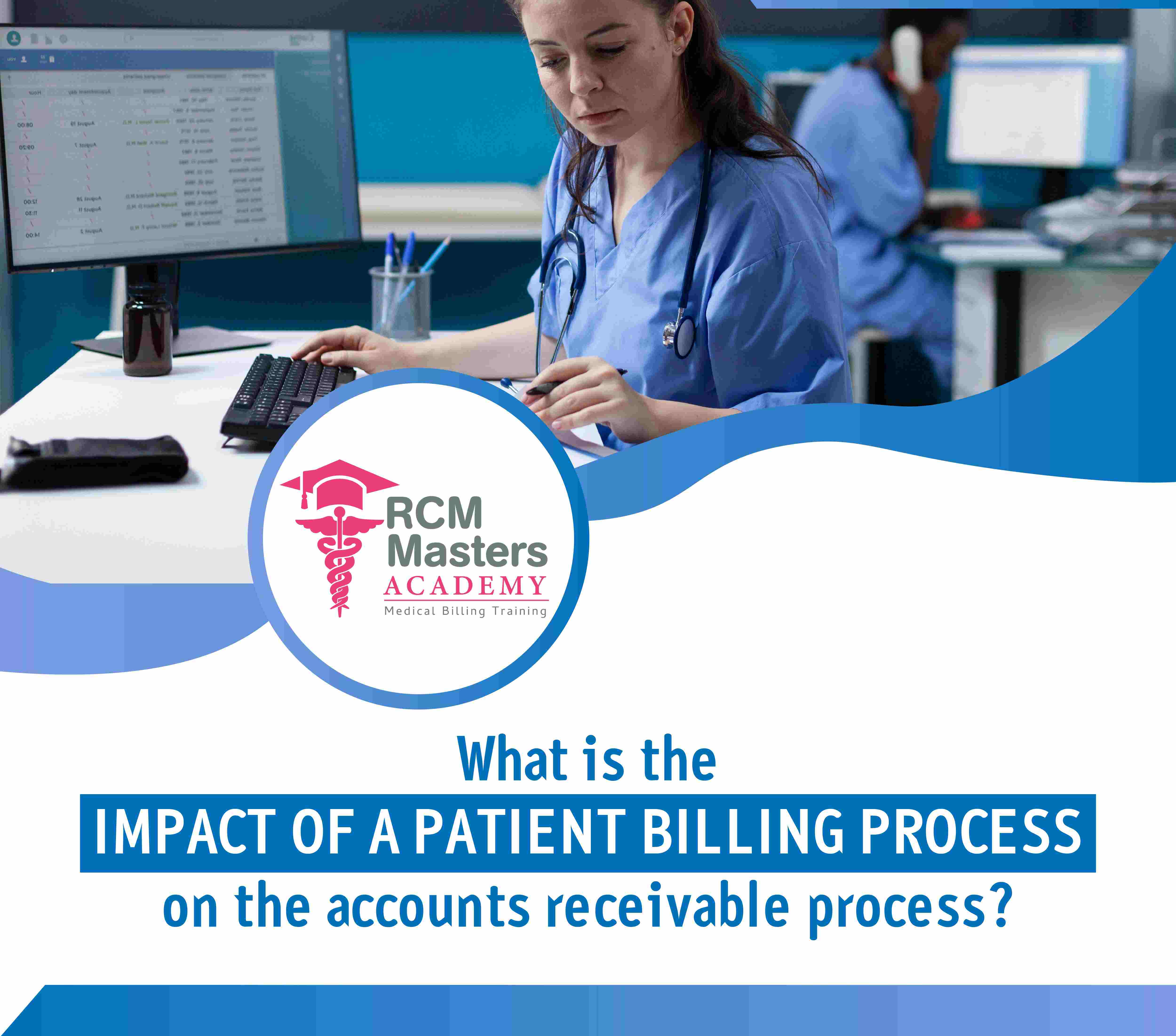 info@rcmmastersacademy.com
info@rcmmastersacademy.com

The patient billing process is an essential component of healthcare revenue cycle management. It is the process by which healthcare providers bill patients for the services rendered, including medical treatments, consultations, medications, and other related services. The process includes verifying insurance coverage, collecting co-payments and deductibles, submitting claims to insurance companies, and following up on unpaid bills. The impact of the patient billing process on the accounts receivable process cannot be overstated, as it affects the financial health of healthcare providers and their ability to provide quality care to their patients.
Inefficient patient billing processes can have a negative impact on the accounts receivable process. For instance, if the billing process is slow, incomplete, or inaccurate, healthcare providers may not receive payment for services rendered in a timely manner, leading to a delay in the receipt of revenue. Additionally, if patients do not receive bills in a timely manner or if they are unclear about the charges, they may delay payment or dispute the charges, further delaying revenue collection.
A streamlined patient billing process, on the other hand, can significantly improve the accounts receivable process. By simplifying the billing process, healthcare providers can reduce the time and resources required to process bills and collect payments. This, in turn, can improve cash flow and reduce the amount of time it takes to collect outstanding balances. A streamlined billing process can also reduce the number of errors in billing, which can lead to fewer denied claims and increased revenue.
One key factor that affects the patient billing process is the quality of communication between healthcare providers and their patients. Patients need to be informed about the billing process, including what services are covered by insurance, what their financial responsibility is, and how they can pay their bills. This requires clear and concise communication, including providing patients with easy-to-understand bills and clear instructions on how to pay.
Another factor that impacts the patient billing process is the use of technology. Technology can streamline the billing process by automating many of the manual tasks involved in billing and collections, such as verifying insurance coverage, submitting claims electronically, and processing payments online. This not only saves time and reduces errors, but it can also improve patient satisfaction by providing a more convenient and transparent billing experience.
In conclusion, the patient billing process is a critical component of healthcare revenue cycle management that has a direct impact on the accounts receivable process. A streamlined and efficient billing process can improve cash flow, reduce errors, and enhance patient satisfaction. Conversely, an inefficient billing process can result in delayed revenue collection and increased costs. Healthcare providers should prioritize the patient billing process and explore opportunities to streamline the process using technology and clear communication to improve financial outcomes and patient satisfaction.
You can enroll for our Online Medical Billing Training here: